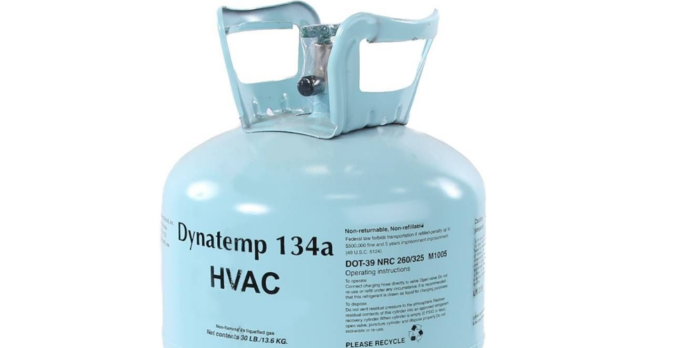Most air conditioners and heat pumps employ refrigerants, which are working fluids that change phase repeatedly from liquid to gas and back during the refrigeration cycle.
Because of their toxicity, ignitability, and environmental impact (CFC and HCFC refrigerants contribute to ozone depletion, while HFC refrigerants contribute to climate change), regulations surrounding refrigerants are strict.
r134a 30 lb is a significant form of Refrigerant, and you can also purchase it and obtain it through the internet.
Is A Refrigerant Necessary for The Operation Of An Air Conditioner?
Your air conditioner is made up of various parts, each of which is just as essential as the one that came before it to guarantee that your system operates as smoothly and successfully as is humanly possible.
The proper amount of Refrigerant is essential to the efficient operation of your system. To put it another way, Refrigerant is a component that aids in producing the colder air distributed throughout your home by your air conditioning system. Your system wouldn’t function properly if you didn’t have it.
The Refrigerant that is utilized in air conditioning units can often be located in either a gaseous or liquid state. When paired with the other parts of your air conditioner, it pulls heat from the surrounding environment and transforms it into a cool airflow. Because of this, it is an essential part of a system that is in proper operating order.
How Does a Refrigerant Work?
Refrigerant is housed in copper coils inside air conditioners. Once the Refrigerant has absorbed enough heat from the inside air, it will turn into a high-pressure liquid at atmospheric pressure. Components of the air conditioner send the Refrigerant outside, which is cooled by a fan that blasts hot air over the coils and then exhausts the air outside.
After reaching the desired temperature, the Refrigerant reverts to its original state as a low-pressure gas. A second fan, situated inside the house, blasts airflow over the cool coils, which then causes the cold air that is produced to be distributed throughout the entire building. The process continues in a loop.
The Ability of A Refrigerant To Produce A Cooling Effect
When a refrigerant changes states from liquid to gas & back again, it takes in and gives off heat. This is how it can reduce the temperature inside of a house. Through compression, liquid Refrigerant is converted into a high-pressure and high-temperature gas.
The refrigerant temperature drops as it travels to the air conditioner’s outdoor coil, where it then condenses and releases the heat it had been holding. When it finally makes it to the interior coil, it has already cooled to the point where it will produce evaporation when it comes into contact with the warmer air inside.
This removes the heat in the air, bringing the temperature down. The cycle is restarted by bringing the Refrigerant, which has transformed into a liquid, back to the compressor.
Conclusion
If there are no refrigerant leaks during the air conditioner’s lifetime, the amount of the Refrigerant should remain unchanged. If the amount of the Refrigerant starts to drop, indicating that its charge is decreasing, you need to have qualified technicians resolve the issue as quickly as possible.
Not only will insufficient Refrigerant cause a reduction in the air conditioner’s capacity to cool the air, but it can also cause severe damage to the compressor.




